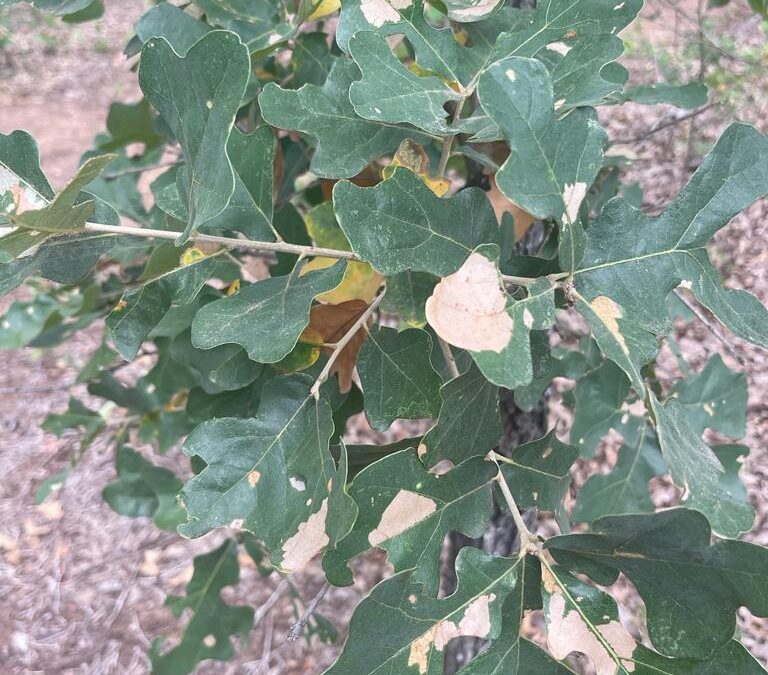This Article Includes: Red Oaks, Mexican Oak, Live Oak, and Lacey Oak
Introduction:
Texas boasts a rich diversity of oak trees, with over 50 native varieties found throughout the state. Identifying these majestic trees can be a fascinating endeavor, and one of the most reliable ways to do so is by examining their leaves. In this article, we will explore four common oak varieties found in Texas – Red Oak, Mexican Oak, Live Oak, and Lacey Oak – and delve into the unique characteristics of their leaves. By understanding the distinct features of each variety, you’ll be better equipped to identify oak trees in your surroundings. Identifying Oak Trees here are the 4 types of Oaks:
- Red Oak:
Red Oak (Quercus spp.) is a prevalent oak species in Texas, known for its vibrant autumn foliage. The leaves of Red Oaks are typically elongated and have a pointed tip. They measure around 4 to 8 inches in length and feature a distinct lobed structure. Each leaf typically has 7 to 9 lobes, with deep sinuses between them. The edges of the lobes are often smooth, but some varieties may exhibit small bristles or tiny teeth. The upper surface of Red Oak leaves is glossy and dark green, while the underside is paler, with a slight fuzziness. - Mexican Oak:
Mexican Oak (Quercus polymorpha) is another common oak variety found in Texas, particularly in the western regions. The leaves of Mexican Oaks are oblong or lanceolate in shape, measuring around 2 to 4 inches in length. They have smooth edges and are typically deeply lobed, with 5 to 7 lobes per leaf. The lobes are often rounded and may have irregular margins. Mexican Oak leaves have a glossy, dark green upper surface and a lighter green or grayish underside. The texture of the leaves is smooth and leathery. - Live Oak:
Live Oak (Quercus virginiana) is an iconic oak species in Texas, known for its sprawling branches and evergreen foliage. The leaves of Live Oaks are small and elliptical, measuring around 1 to 2 inches in length. They have smooth edges and are typically leathery in texture. Live Oak leaves are simple, meaning they are not lobed like those of Red Oak or Mexican Oak. The upper surface of the leaves is dark green and glossy, while the underside is pale green. One distinctive feature of Live Oak leaves is their tendency to remain on the tree throughout the year, providing a lush canopy even in winter. - Lacey Oak:
Lacey Oak (Quercus lacey) is a native oak species found primarily in central and western Texas. The leaves of Lacey Oaks are small and oblong, measuring around 1 to 3 inches in length. They have smooth edges and are typically deeply lobed, with 3 to 5 lobes per leaf. The lobes are often rounded and may have irregular margins. Lacey Oak leaves have a bluish-green color and a leathery texture. The upper surface of the leaves is smooth, while the underside is paler and may have a slight fuzziness.
Conclusion:
Identifying oak trees in Texas can be an exciting endeavor, and understanding the characteristics of their leaves is a valuable tool in this process. By familiarizing yourself with the distinct leaf features of common oak varieties like Red Oak, Mexican Oak, Live Oak, and Lacey Oak, you’ll be better equipped to recognize these majestic trees in your surroundings. So, the next time you come across an oak tree in Texas, take a closer look at its leaves, and let their unique characteristics guide you in identifying the species.
